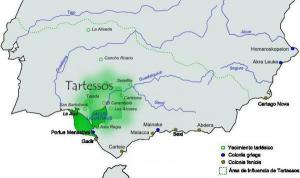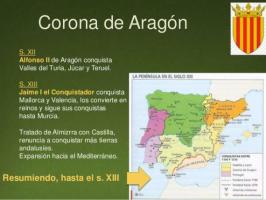8 important works of ROMANESQUE art
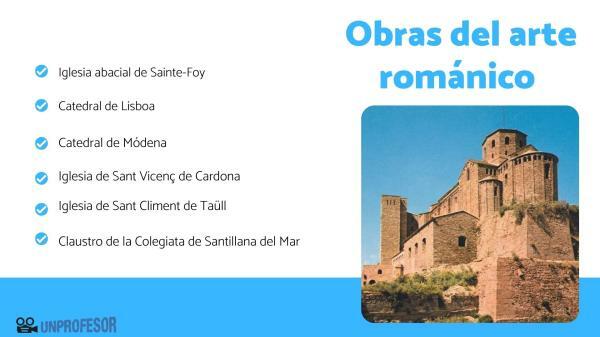
One of the most outstanding features of the Romanesque art it is that it constitutes the first unified art of the Western Christian world. Chronologically, it extends between the 11th and 12th centuries, the main axes being France and Italy, especially in the areas of the Loire, Languedoc, Roussillon and the Italian region of the Lombardy. Some points from which it radiated to Spain, the Netherlands, Yugoslavia and Switzerland, among others.
In this lesson at unPROFESOR.com we offer you a selection of the Important works of Romanesque art, including some of the famous romanesque paintings.
Index
- Abbey Church of Sainte-Foy and reliefs of its tympanum, one of the works of Romanesque art
- Lisbon Cathedral
- Modena Cathedral
- Church of Sant Vicenç de Cardona
- Church of Sant Climent de Taüll: temple and paintings
- Cloister of the Collegiate Church of Santillana del Mar
- Frescoes and capitals of the Royal Pantheon of León
- Capitals of the Cloister of Santo Domingo de Silos
Abbey Church of Sainte-Foy and reliefs of its tympanum, one of the works of Romanesque art.
In this list we offer you a selection of the works of Romanesque art outstanding, both architecture and sculpture and painting. It must be taken into account that both sculpture and painting were subordinated to the architectural framework.
Abbey Church of Sainte-Foy and reliefs of its tympanum is one of the great examples of Romanesque architecture and sculpture, it is the Abbey Church of Sainte-Foy in the French town of Conques, one of the most emblematic points of the French Camino de Santiago.
A charming town that makes us go back in time and immerse ourselves in the beauty of its church abbey, built between the middle of the 11th century and the 12th century, sculpting a representation on its tympanum of Final judgment which is considered one of the most outstanding works of Romanesque sculpture.

Lisbon Cathedral.
The Lisbon Cathedral is a sober building with the appearance of a fortress as it presents battlements on their bell towers, as a tower. A typical feature of Portuguese Romanesque to which is added the sobriety and the preponderance of stone.
This cathedral is very similar to the one in Coimbra, a factor that suggests that both were built by the same architect. Also notable are the Norman Romanesque influences, being usual that these were taken as a reference. This cathedral was built in the middle of the 12th century.
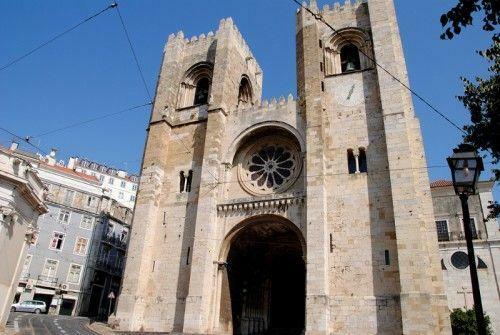
Modena Cathedral.
Another of the important works of Romanesque art is the Modena Cathedral, one of the most prominent examples of italian romanesque. The work began at the end of the 11th century and draws attention for its beautiful rose window, its bell tower and the lions that are located at the base of the columns that support the porch of the entrance to the temple.
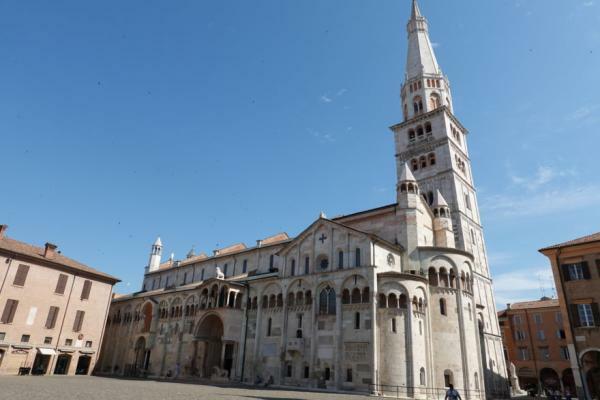
Church of Sant Vicenç de Cardona.
This church is located near the Castle of Cardona and it forms with it a set of the first Romanesque and that was built in the 11th century, reaching a strong root in the whole area of the peninsular northeast.
The church dates from 1019 and has a basilica floor plan with naves, as well as dimensions that make it one of the largest churches of the time.

Church of Sant Climent de Taüll: temple and paintings.
In the Pyrenean valleys, some of the most interesting examples of Romanesque in the area. The church of Sant Climent de Taüll also has a basilica floor plan with three naves, an apse at the head and two apses on both sides and a beautiful bell tower.
The temple consecrated in the 12th century was designed by Lombard architects. The bell tower has a square base and six floors, combining blind arches and bigeminated and trigeminated windows.
But what makes this church stand out is because of the imposing and beautiful pantocrator, summit of Romanesque painting and whose original can be admired in the National Art Museum of Catalonia.
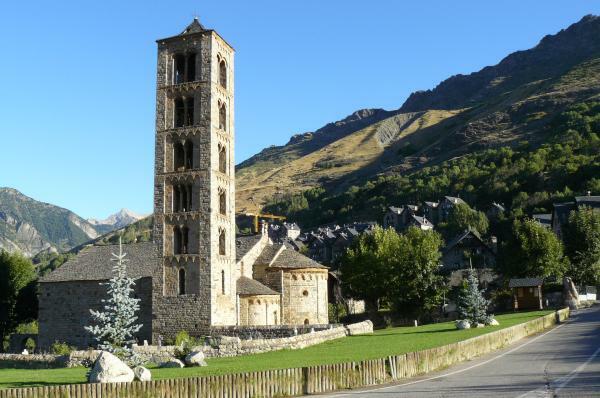
Cloister of the Collegiate Church of Santillana del Mar.
This Collegiate Church is one of the most beautiful examples of Romanesque in the peninsula and Cantabria. The Collegiate Church dates from the 12th century and follows the classic scheme of three naves and four sections, three apses and a transept and with a dome over a transept.
The cloister is the most outstanding part of the temple due to its design and the ornamentation of the capitals in which plant and figurative motifs can be seen.
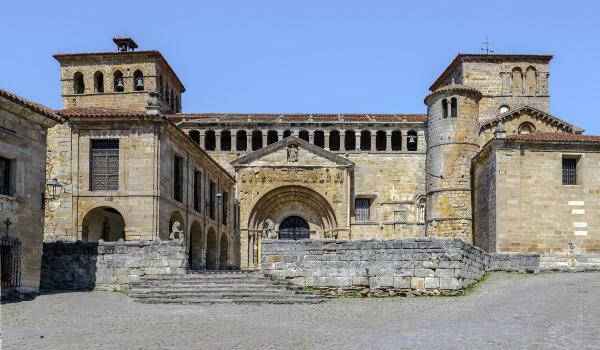
Frescoes and capitals of the Royal Pantheon of León.
The Royal Pantheon is located in the Collegiate Church of San Isidoro de León and constitutes a masterpiece of Romanesque. It is located at the foot of the Church and is the burial place of the kings Fernando I and Sancha.
There we find a beautiful example of romanesque sculpture in the historiated capitals or decorated with plant themes that separate the space into six sections.
Its frescoes also stand out. Some frescoes that cover the vaults and in which scenes of the Nativity, the Passion and the Resurrection of Christ are captured. Their pantocrator appears wrapped in a mystical mandorla and with the letters alpha and omega. The four evangelists in the form of animals or tetramorphs surround him. The agricultural calendar that decorates the intrados of the arch also stands out.
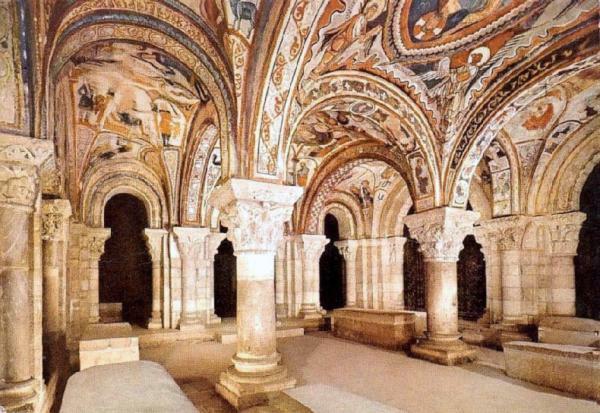
Capitals of the Cloister of Santo Domingo de Silos.
We end this review of important works of Romanesque art with this cloister from the end of the 11th century It is the most prominent part of the Church and has some of the most beautiful Romanesque capitals, as well as reliefs on the pilasters that decorate the corners of the lower gallery of the cloister.
The theme attracts a lot of attention, since part of them, specifically the capitals 1 to 36, does not deal with religious themes but with fantastic beings and monsters.
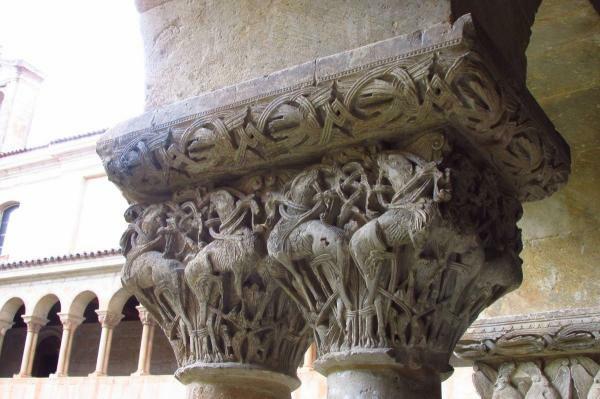
If you want to read more articles similar to Important works of Romanesque art, we recommend that you enter our category of History.
Bibliography
- DE DALMASES, Núria; I PITARCH, Antoni Jose. Catalan Romanesque art. Catalonia, 1987, p. 38-41.
- GARCÍA-VALDECASAS, Joaquín Pérez, et al. The Art Of The Romanesque, First European Style. Contributions to the Social Sciences, 2010, no 2010-02.
- LLORENTE, Antonio Tovar. Spanish Romanesque art. Bulletin of the Seminary of Studies in Art and Archaeology: BSAA, 1933, no 2, p. 443-446.
- MELÚS SERÓN, José Javier, et al. The art of Christian Europe in the Middle Ages. 2009.

